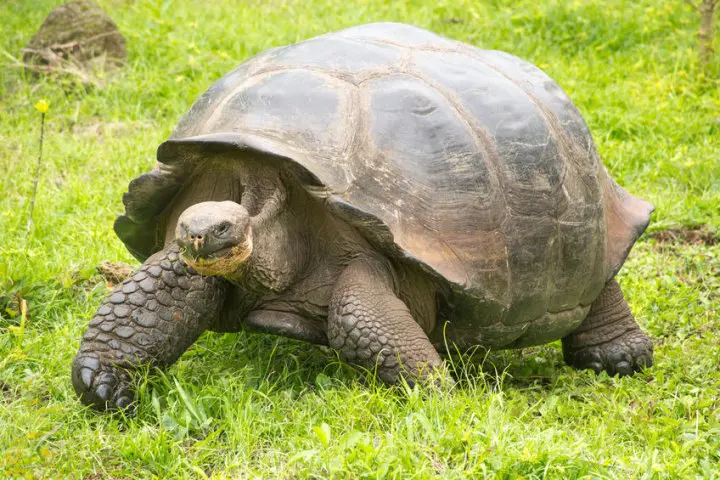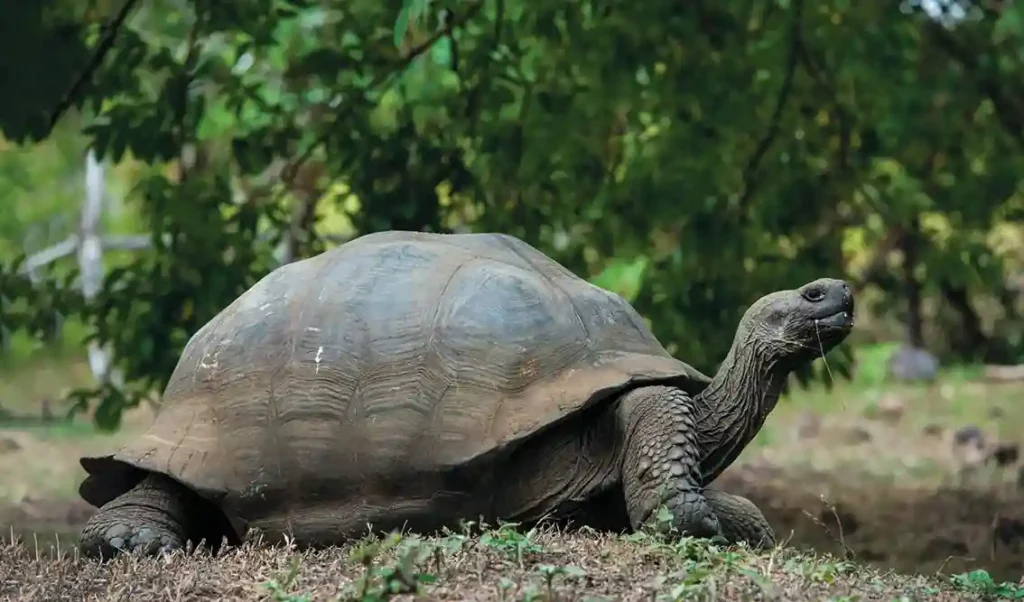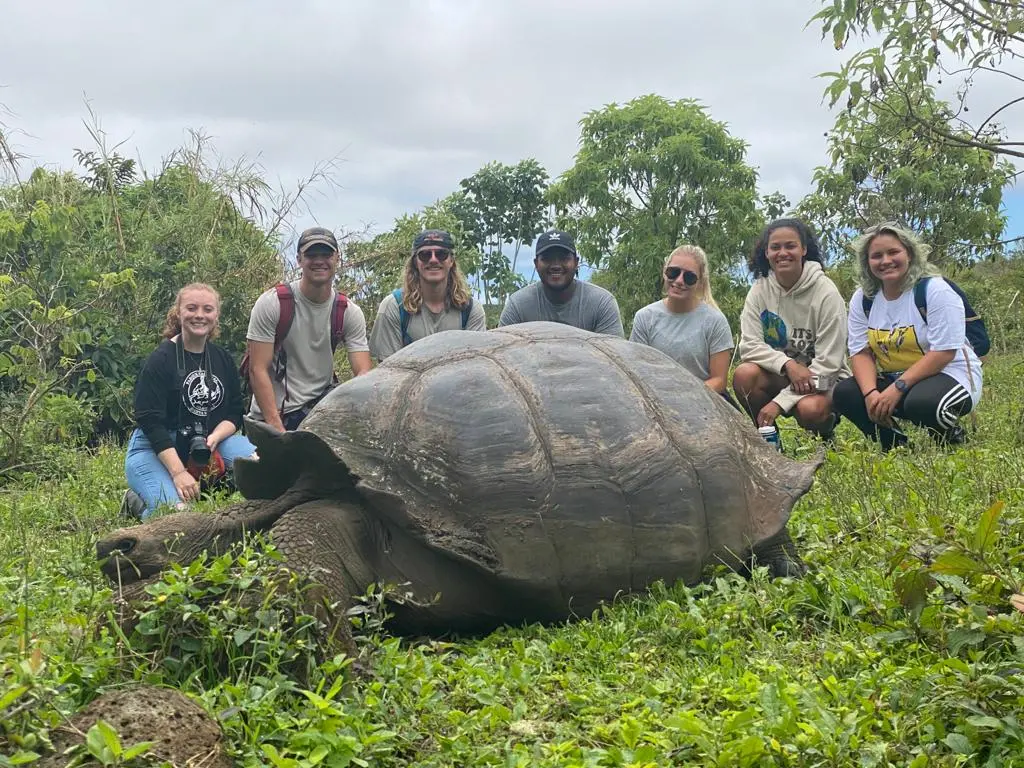Galapagos Giant Tortoise is a perfect example of the special wildlife found on the Galapagos Islands. These large and long-living animals, often living over 100 years, are a big attraction for visitors. They do more than just look impressive—they help keep the island’s ecosystem healthy. Their grazing shapes the land and supports the plants and animals around them. These tortoises are a main part of what makes the Galapagos Islands so unique and full of life.
Exploring their homes gives you a fascinating look at their slow and ancient way of life, showing why it’s so important to protect these gentle giants. Whether you love animals, care about saving nature, or are just curious about these amazing giant tortoises, the Galapagos Islands are the best place to learn about and see one of nature’s most remarkable creatures up close.

History and Evolution of Galapagos Giant Tortoise
The history of giant tortoises in the Galapagos Islands is really interesting. These old animals have been on the islands for a long time, and they changed a lot to live there. Scientists think they came to the islands from South America a long time ago, probably by floating in the ocean. As time went on, different types of tortoises developed on different islands. They changed to fit where they lived.
When Charles Darwin visited the Galapagos Islands in the 1800s, he found these tortoises fascinating. He noticed that their shells and necks were different depending on which island they were from. This made him think about how animals change over time, which led to his idea of evolution. Sadly, there aren’t as many giant tortoises now because people have hunted them and ruined their homes.
Habitat and Behavior Galapagos Giant Tortoise
The natural habitats of Giant Tortoise in the Galapagos Islands vary depending on the island they inhabit, ranging from arid lowlands to humid highlands. They can be found in grasslands, shrublands, and forested areas, where they seek out vegetation and water sources. These tortoise have a slow metabolism and can go for long periods without food or water, allowing them to survive in harsh conditions. Their feeding habits consist mainly of grazing on grasses, leaves, cacti, and fruits, using their strong beaks to tear and chew food.

Galapagos Giant Tortoise play a vital role in shaping the vegetation of their habitats through their feeding habits. In terms of reproduction, these tortoises reach sexual maturity at around 20-25 years old and mate during the rainy season. Females lay their eggs in shallow nests dug in sandy soil, typically laying around 2-16 eggs per clutch. The incubation period lasts for several months, and hatchlings emerge ready to fend for themselves. Despite their slow reproductive rate, lifespan of Galapagos tortoises is long, with some individuals living for over a century. Their unique habitat preferences and behaviors make them fascinating subjects for study and conservation efforts in the Galapagos Islands.
Visitor’s Encountering Galapagos Giant Tortoise
The visitor experience in the Galapagos Islands offers a unique opportunity to witness Gentle Giant Tortoises in their natural habitat. Many guided tours and excursions are available for tourists to explore the islands and encounter these remarkable creatures up close. Visitors can observe tortoises grazing peacefully in the wild, basking in the sun, or even crossing hiking trails. Some tour operators offer educational programs and guided walks led by knowledgeable naturalists, providing insights into the tortoises’ behavior, habitat, and conservation efforts.

Additionally, visitors have the chance to visit research centers and sanctuaries dedicated to the protection and rehabilitation of Tortoises. These facilities offer informative exhibits, interactive displays, and opportunities to see tortoises up close, providing a deeper understanding of their importance and the challenges they face. Overall, the visitor experience in the Galapagos Islands offers a once-in-a-lifetime opportunity to connect with nature and learn about one of the world’s most iconic species.
What Is Galapagos Giant Tortoise Diet?
Galapagos Giant Tortoises mostly eat plants, as they are herbivores. They enjoy eating grasses, leaves, and fruits found on the islands. Cacti are also a big part of their diet, especially in dry times, because they provide both food and water. The tortoises love to eat the fruit of the opuntia cactus and certain types of grasses that are rich in nutrients. They spend many hours each day slowly grazing, and their strong jaws help them chew tough plants that other animals can’t.
These tortoises are good at adapting to the changing seasons on the islands. During the rainy season, they enjoy fresh, green plants, while in the dry season, they eat drought-tolerant plants and cacti. Their bodies can store water for long periods, which helps them survive when food and water are hard to find. By eating so many plants, the tortoises help shape the land and spread seeds, which keeps the island’s plants healthy.